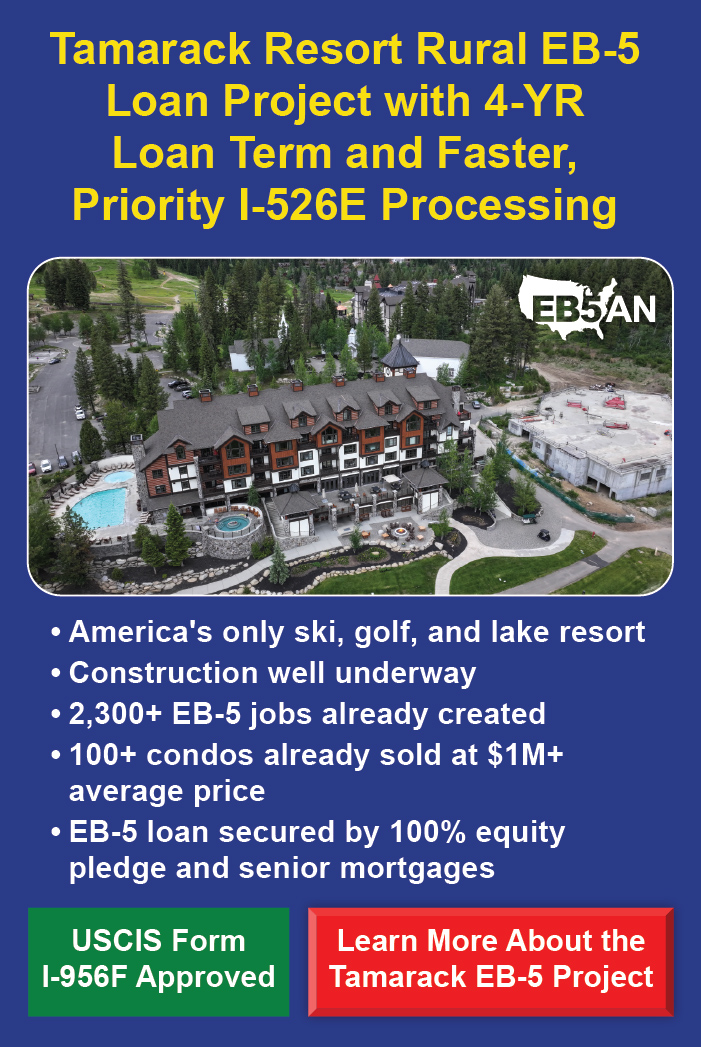United States Citizenship and Immigration Services (USCIS) is a federal agency within the Department of Homeland Security that administers the country’s immigration and naturalization system. In addition to processing immigration visas, it is responsible for liaising with immigration courts, contributing to immigration enforcement, and helping codify immigration laws.
USCIS provides processing estimates for various visa application petitions – including forms related to the EB-5 program – on its official website. On the website, under “Check Processing Times,” prospective EB-5 investors can select a specific form associated with the EB-5 program to view information about normal processing times.
It is recommended that EB-5 investors familiarize themselves with current USCIS processing times to most effectively plan for each step in their immigration journey. Understanding what these wait times actually mean for an individual’s specific case can be challenging, but it is key to a successful EB-5 investment experience.
This article will outline how to understand the provided USCIS processing times and the steps that EB-5 investors can take to stay on top of the expected timeline of their application every step of the way.
Why It’s Important to Understand U.S. Citizenship and Immigration Services (USCIS) Processing TimesWhat Are the Current USCIS Visa Processing Times?
What Do Processing Times Actually Indicate?
How to Check Case Processing Times with USCIS
The Value of USCIS Case Inquiries
Why EB-5 Investors May See Shifts in Receipt Dates for Case Inquiries
Additional Challenges with Estimated Processing Time Ranges
Make Your Immigration Journey Easier with EB5AN
Why It’s Important to Understand U.S. Citizenship and Immigration Services (USCIS) Processing Times
The notion that some EB-5 investors need to wait several years for the adjudication of a petition is not new. However, in many cases, wait times can be quite reasonable.
Understanding how to interpret the EB-5 processing times provided by USCIS can help prospective investors know what to expect at each stage of the process. Historical data on estimated USCIS processing times provides a broad sense of how long a petition can be expected to be processed, from a few months to a few years.
It is important to check processing times regularly, as they are updated twice every year. USCIS processing times provided on the official website are regularly updated and indicate the time it took to adjudicate 80% of cases over the past six months. It is important to understand that USCIS data on EB-5 processing can vary dramatically depending on the particular form, the investor’s home country, and a variety of other factors.
USCIS generally processes petitions based on the order in which they are received. However, I-526/I-526E petitions are adjudicated according to the immediate availability of visas for the applicant’s home country.
What Are the Current USCIS Visa Processing Times?
As of March 2024, USCIS reports processing times as:
- Form I-526/I-526E
- 4.6 years to adjudicate 80% of petitions.
- For Chinese nationals, the processing time is 7.3 years, as applications from the country are currently backlogged.
- Form I-829
- 5 years to adjudicate 80% of petitions.
- Form I-485
- Processing times vary depending on the state and the service center, as the form is handled by local USCIS offices.
What Do Processing Times Actually Indicate?
USCIS has changed the way it reports processing times. Formerly, USCIS processing times were reported as a “range.” For instance, in 2020, the agency reported an I-526 processing time range of between 46 and 74.5 months. These two numbers meant:
- Lower Number: How long it took to process 50% of the total petitions
- Higher Number: How long it took to process 93% of the total petitions
However, USCIS has consolidated its processing time ranges, and now simply provides a single number. This means that EB-5 investors only see a single, fairly conservative estimate of their expected wait time. Most investors will have their forms processed more quickly than the provided estimate, although some more complex cases may take longer.
How to Check Case Processing Times with USCIS
On the “Check Case Processing Times” page of the USCIS website, EB-5 program participants can access estimated processing time ranges for a variety of forms, including I-526/I-526E and I-829 petitions.
These are not the only forms that EB-5 investors can check for an estimated processing time, though they are the most common. Specific wait times may vary by regional office.
Historical USCIS processing times are also available on the USCIS website, showing data going all the way back to FY 2012.
The Value of USCIS Case Inquiries
In an attempt to address unreasonable or unexpected delays in processing times, USCIS has begun offering case inquiries via an online help tool.
The USCIS website only allows case inquiries if an investor’s adjudication is taking longer than 93% of all cases for a given petition. Investors do not need to calculate whether they are eligible to submit a case inquiry themselves. Rather, to determine if their petition is eligible for an inquiry, an EB-5 investor should:
- Go to the Citizenship and Immigration Services’ processing times page.
- Choose their petition (e.g., I-526, I-829, etc.) from the dropdown menu.
- On the following page, click “check your case number.”
- Enter their petition filing receipt number.
An automatic prompt will appear if the investor’s petition is taking longer than 93% of other adjudications, and is therefore eligible for a case inquiry. Further instructions will be provided on how to submit a case inquiry.
Why EB-5 Investors May See Shifts in Receipt Dates for Case Inquiries
As an EB-5 investor, you might be monitoring your case inquiry date so you can submit a status inquiry. If this is the case, you may have seen your receipt date fluctuate due to various factors.
This may occur because USCIS is prioritizing certain types of applications or is experiencing a surge of EB-5 applications, leading to backlogs. Overall case processing times are only updated every six months, so updates encompass data from petitions processed in that time.
Additional Challenges with Estimated Processing Time Ranges
There may also be discrepancies between the estimated USCIS processing times and historical average processing times. This may be because:
- An estimated processing time measures only petitions processed over the course of the six months prior to the report date.
- Historical average processing times measure all instances of a particular petition still pending, and reflect the typical wait time among them.
You should also be aware that:
- The estimated USCIS processing time indicates the median processing time, not the average processing time.
- When petitions are processed either unusually quickly or slowly, it automatically skews the data even further – and sometimes in a significant way.
Make Your Immigration Journey Easier with EB5AN
EB-5 investors should not be discouraged by the possibility of long wait times. The EB-5 visa process is still one of the most efficient and reliable ways for investors and their eligible family members to receive U.S. Green Cards.
Investors should understand that, even though the USCIS processing time listed can be long:
- 80% of all petitions are adjudicated in a shorter timespan than what is listed on the USCIS website.
- If an investor’s adjudication takes longer than 93% of other petitions, USCIS provides them with an automated online help tool to file a case inquiry.
- 50% of all petitions are processed more quickly than the listed figure.
For further guidance on USCIS processing times or to get started on your EB-5 journey, book a call with our EB-5 team.
To learn more about available EB-5 projects through EB5AN, click here.










